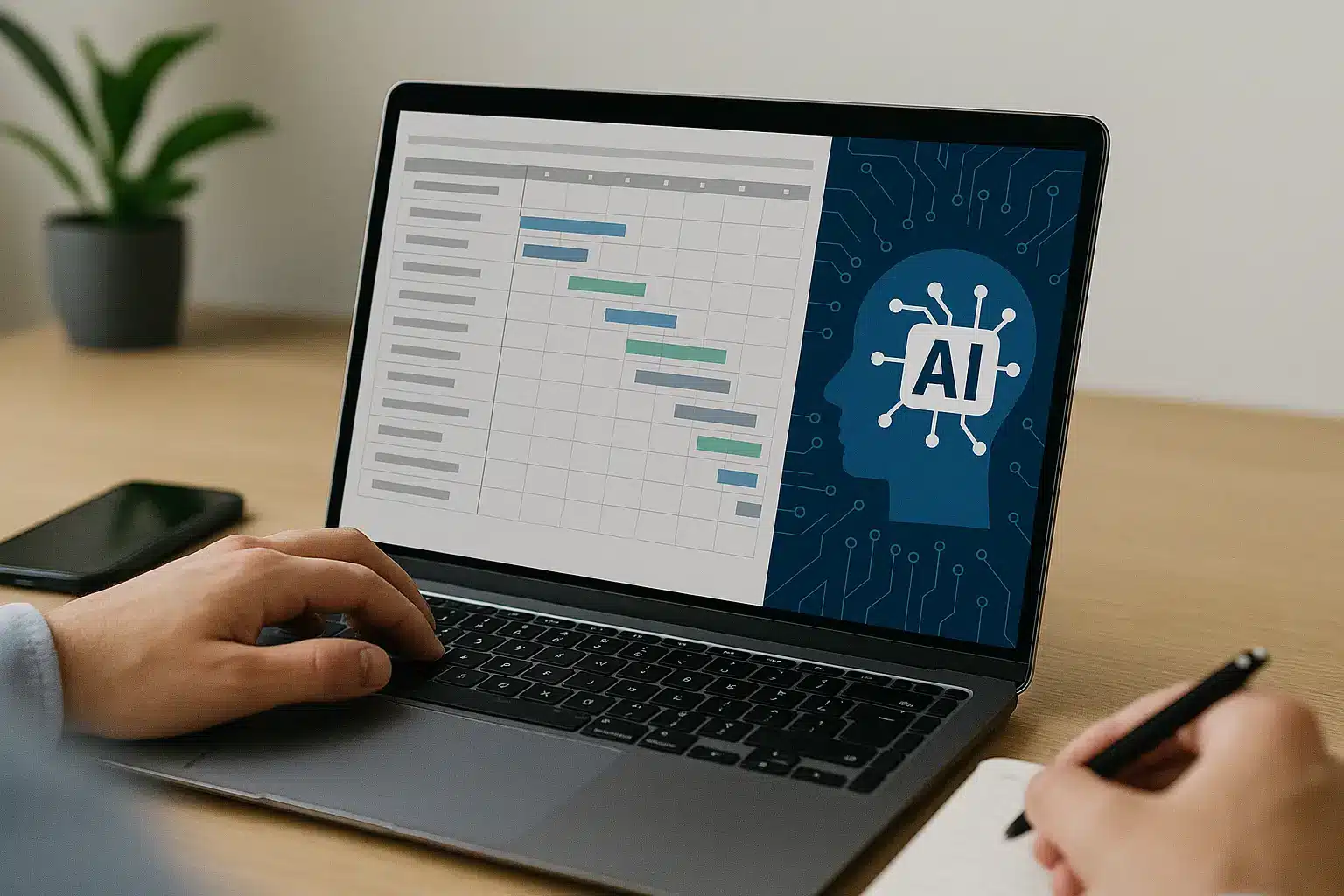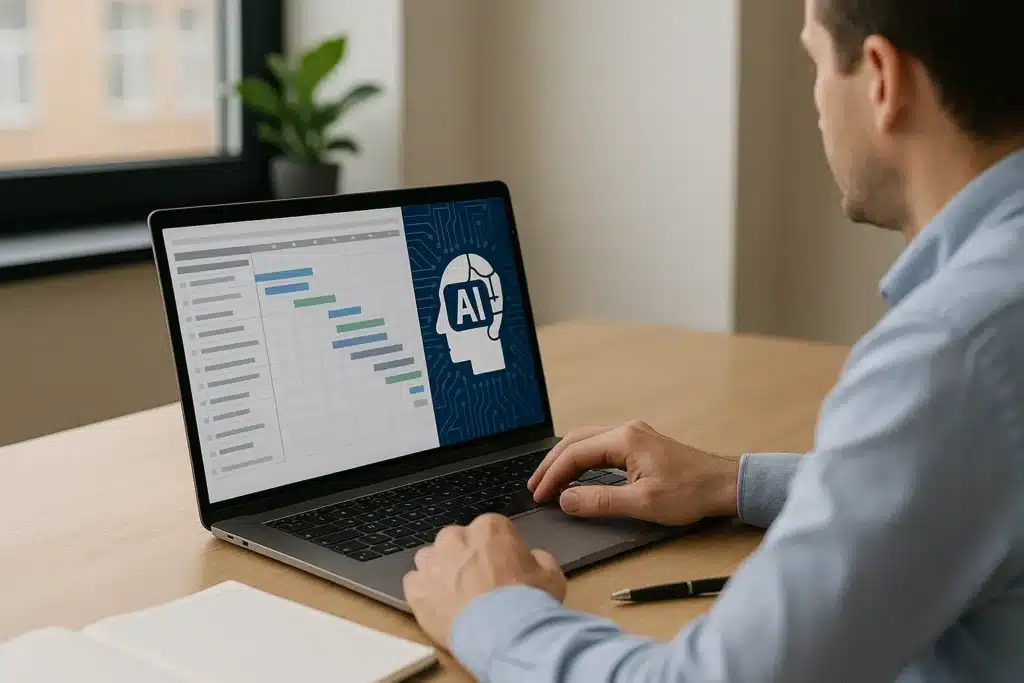AI in Project Management : A Tailored Approach for Modern Projects
Author: Hajime Estanislao, PMP®; Editor: Geram Lompon; Reviewed by: Alvin Villanueva, PMP®, PMI-ACP®
Project management has always been about balance by delivering projects within scope, on time, and aligned with business objectives. Yet, as organizations face tighter deadlines, global teams, and complex projects, traditional methods struggle to keep up. AI in
AI
From Routine Tasks to Strategic Efforts
Routine tasks slow down project teams, but AI automates repetitive tasks such as task scheduling, task updates, and status reporting. By reducing the burden of these routine processes, project managers can redirect their energy toward more strategic aspects of managing projects, such as guiding development teams, managing cross-team collaboration, and aligning efforts with business objectives.
AI-powered tools extend beyond automation. AI-powered dashboards offer real-time insights into project progress, resource allocation, and project timelines. It allows project managers to take action before delays escalate, adjust project plans as priorities shift, and ensure smoother project lifecycles. By transforming administrative duties into automated processes, AI creates space for project managers to lead with greater focus and clarity.

Practical Use Cases of AI in Project Management
AI solutions demonstrate their value across the full project lifecycle, offering project teams tailored support that strengthens both planning and execution:
- Project planning with context: Machine learning models assess past performance and project data to recommend realistic project timelines, task sequencing, and dependencies.
- Resource management with precision: AI evaluates resource availability and team members’ skills, providing an optimized task assignment approach that reduces bottlenecks and balances workloads across multiple projects.
- Risk management with foresight: Predictive analytics detect potential risks early by examining patterns in historical data, allowing project managers to adapt plans and protect project success rates.
- Collaboration with clarity: Natural language processing summarizes meetings, generates action points, and supports cross-team communication, reducing the risk of misalignment.
Each use case highlights how AI acts not as a replacement for human judgment but as a partner that strengthens decision-making and supports project managers in achieving project outcomes.
The Benefits of Tailoring with AI
Tailoring
- Data-driven decision making: AI’s ability to analyze historical project data produces insights, helping project managers create project plans that reflect real-world challenges.
- Efficiency and focus: Automating routine tasks allows project managers and teams to concentrate on more strategic aspects, improving creativity and problem-solving.
- Improved outcomes: By tracking project progress, optimizing resource allocation, and predicting risks, AI enables projects to be delivered more consistently and effectively.
- Scalable support: AI-enhanced software adapts to both small projects and complex portfolios, offering real-time insights that keep multiple projects aligned with priorities.
Preparing Teams to Embrace AI
Adopting AI in
AI also assists in identifying skill gaps, recommending training areas, and guiding project managers to strengthen team members’ skills. It creates a cycle of improvement where AI not only supports managing projects but also contributes to developing stronger project teams.
ROSEMET helps organizations bridge this gap by offering tailored upskilling programs for project managers and project teams. These programs focus on aligning AI solutions with human creativity and leadership, ensuring that project managers remain confident decision-makers in the era of AI.

Wrapping Up: AI as a Partner
AI in
When thoughtfully applied, AI transforms
References
Harvard Business Review. (2023, February 21). How AI will transform
Forbes Technology Council. (2024, June 24). AI meets Agile: Transforming
Project Management Institute. (2023). AI in

